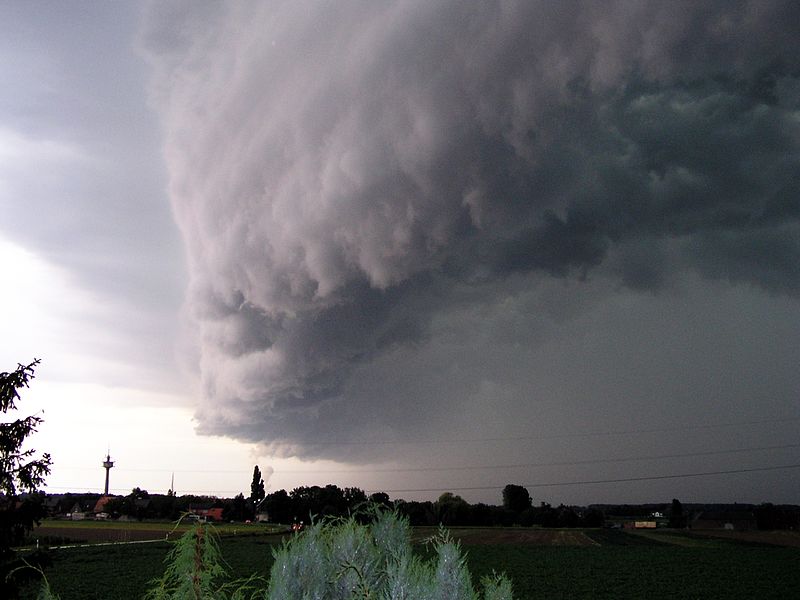 We’ve had our share of storms and rainy days in the Northeast so far this year, with more deluges in the forecast! Meteorologists and other media entities are quick to warn about the possibilities of flooding and other consequences of consistent rains, and they often give tips and pointers about how to stay safe if flooding should occur in your area. But what about your pets? What do you do to keep your pets safe and prepared in case severe storms, flash flooding or some other cause for evacuation should occur? It’s certainly best to plan ahead for a weather disaster, and with just a few simple steps you can have your pet prepared to deal with a variety of disasters sparing you both from possible heartache.
We’ve had our share of storms and rainy days in the Northeast so far this year, with more deluges in the forecast! Meteorologists and other media entities are quick to warn about the possibilities of flooding and other consequences of consistent rains, and they often give tips and pointers about how to stay safe if flooding should occur in your area. But what about your pets? What do you do to keep your pets safe and prepared in case severe storms, flash flooding or some other cause for evacuation should occur? It’s certainly best to plan ahead for a weather disaster, and with just a few simple steps you can have your pet prepared to deal with a variety of disasters sparing you both from possible heartache.
One of the simplest and most important things you can do for the safety of your pet, pending weather event or not, is to get them an ID. Whether it’s in the form of a metal dog tag, a tattoo, or an injected Microchip ID, these small applications can help to get your pet home if you should get separated for any reason. You can have a simple metal tag custom etched for a few dollars here at That Pet Place or at many other pet stores. I’ve even seen kiosks at places like Lowes and Wal-Mart. Tattoos (lifetime licenses) and micro-chips are permanent markers which can’t be lost if your pet loses his collar. Most shelters are equipped with a scanner, and one of the first actions is to check all animals for a microchip before they evaluated. Some shelters and vets offer micro-chipping and/or tattoo services, and micro-chipping clinics are popping up more and more, at very affordable prices.
It’s also important to keep vaccinations current. Should your pet become lost during a storm or after a weather event, they may end up at the pound or in the “wild”. Not being in the safety of your property, they may be exposed to a wide range of viruses and unvaccinated animals they would normally not encounter. Stress from the situation can also weaken the immune system, and immunizations can keep them from contracting an unfortunate illness.
With these two important steps out of the way, focus on the impending situation. The National Weather Service gives us all advance warning of nasty storms heading your way and their potential for damage including flooding, power outages and property damage. You may know how your own pets react, but many people don’t realize how frightened dogs, cats and other animals are by thunder, high winds, lightning and other things Mother Nature can throw at us. Their senses are more acute than ours, with a wider range of hearing and more sensitivity to vibration and atmospheric pressure. All of the scary changes in their environment may cause anxiety or panic. Instinct may drive them to run and hide, which inside the home may be ok, but outside, without boundaries, they may become lost or disoriented quickly.
 Different pets may require different preparation, and needs should be dealt with on an individual basis. Some pets show no anxiety during storms. Others may show mild to severe symptoms from panting and shaking to extreme hyperactivity or destructive behavior. In most cases you can ease your pet’s tension by creating a safe haven in an interior room away from noises and visual stimuli. In extreme cases you may need to consult your vet for tips on behavior modification or for a mild sedative for stressful situations. Prepare a secure “den” whether it be a comfy crate or a blanket under the bed where your pet prefers to hide. Sometimes turning on the TV or creating other white noise can help to drown out storm noise. Distractions like a favorite toy or treat can also help.
Different pets may require different preparation, and needs should be dealt with on an individual basis. Some pets show no anxiety during storms. Others may show mild to severe symptoms from panting and shaking to extreme hyperactivity or destructive behavior. In most cases you can ease your pet’s tension by creating a safe haven in an interior room away from noises and visual stimuli. In extreme cases you may need to consult your vet for tips on behavior modification or for a mild sedative for stressful situations. Prepare a secure “den” whether it be a comfy crate or a blanket under the bed where your pet prefers to hide. Sometimes turning on the TV or creating other white noise can help to drown out storm noise. Distractions like a favorite toy or treat can also help.
If your pet does show signs of being anxious, it’s important to be neutral. Try not to “reward” the behavior with extra attention or pity, and don’t scold your pet for being upset. If they want to hide, let them hide. And do your best to stay as calm as possible; pets often react to situations by playing off of your behavior.
If things turn from bad to worse, have an evacuation plan and a pack of emergency supplies ready. Flash flooding, wildfires and other secondary effects may call for emergency evacuation, and fast! Make sure you have enough pet carriers for cats, and/or leashes at hand for the pups. If you have to leave your house suddenly, pets are much less likely to get away if confined to a carrier, and crate trained pets often associate the crate or carrier with security. A travel crate or carrier will also be useful if you have to stay at a hotel or evacuation center. Don’t forget to pack a stash of food (canned or dry), a bottle of water and any medications your pet may need as well.
Storm image referenced from wikipedia and originally posted by Gewitter
 That Pet Blog That Pet Place Pet Blog
That Pet Blog That Pet Place Pet Blog
